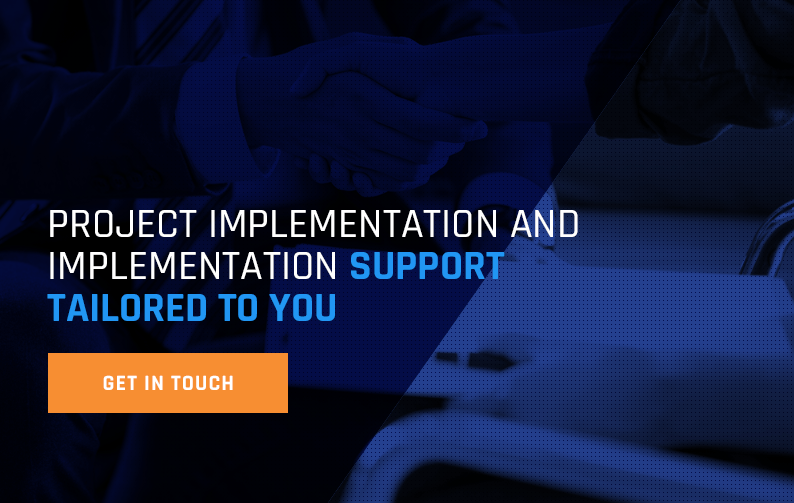How to Approach Project Implementation
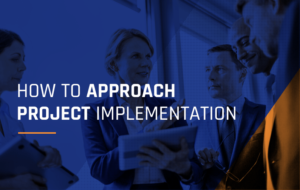
Project implementation is the foundation of good project management. When executed, it becomes the yellow brick road all enterprise initiatives travel down, resulting in more value-adding programs and projects getting done. All without sacrificing quality — or employee sanity.
How can organizations create a project implementation plan? Where should they even begin? Read on to learn the leading project implementation plan approaches and ideologies at an organization’s disposal today — plus tips to build them into your project workflows.
What Are Project Implementation Plans?
A project implementation plan outlines the exact course of action to move business initiatives from abstract ideas to reality.
Successful project implementation approaches strive to create step-by-step, replicable processes that harmonize project execution across teams and departments. Organizations with successful project implementation strategies have defined work according to this economy of repetition. As a result, a business is better able to check off high-value projects while staying within predetermined resource parameters, ultimately improving that organization’s sense of “business as usual.”
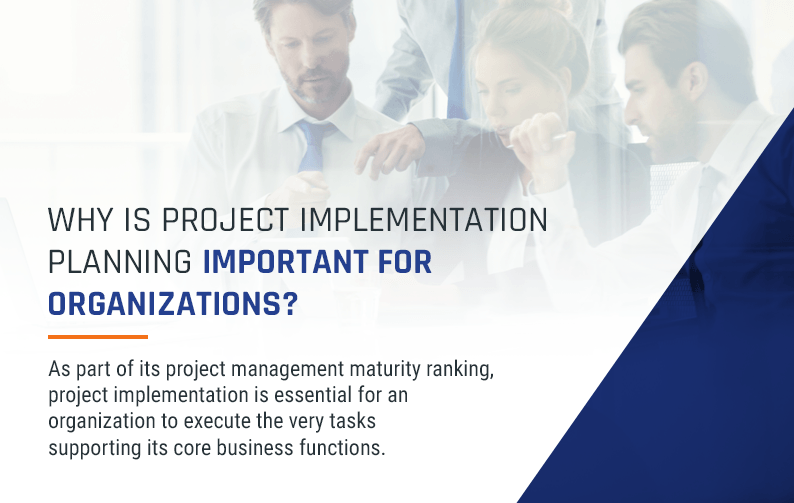
Why Is Project Implementation Planning Important for Organizations?
As part of its project management maturity ranking, project implementation is essential for an organization to execute the very tasks supporting its core business functions. This also includes IT infrastructure implementation project plans and planning.
Organizations with higher project management maturity rankings can handle more projects in less time — as well as execute programs of greater and greater complexity.
In other words, establishing an implementation plan is essential for organizations because it can:
- Map step-by-step norms for project implementation to see more projects get done
- Accomplish projects on time, on budget and using appropriate tools and technology
- Execute projects while adhering to more consistent quality standards
- See new tools and technology have higher adoption and usage rates
- Witness growth in overall quality and scope of value-adding work
Approaches to Building a Project Implementation Strategy
There are two leading categories of approaches an organization can take to build its project implementation strategy: by phase or by project management methodology.
- Opting for the phased strategy provides you with a more personalized step-by-step checklist to create an implementation strategy. This checklist is more likely to court individualized processes and technologies truly geared to your organization’s unique size, project types and organizational structure. It is a made-to-fit-you model from the ground up.
- Choosing a project management methodology means morphing your organization to fit a pre-conceived, certified checklist. Areas for customization exist, yet the predominant focus will be on shaping your operations and structures to fit the methodology’s template and best practices.
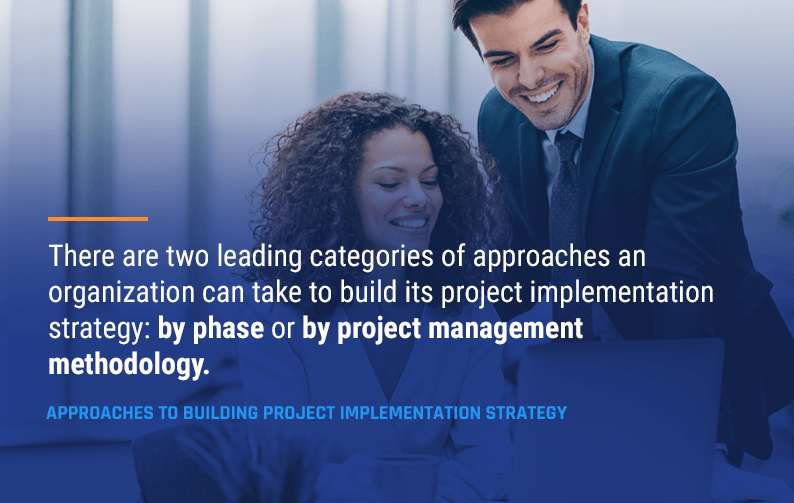
By Phases
The phased approach structures project management implementation into a series of in-depth project-planning stages. Each of these stages contains a task checklist for organizations to address to usher in a new project, a new piece of technology or a new business process from ideation to complete enterprise-wide adoption.
As an organization moves through the phases, it establishes a formalized control process for any initiative to see a more stable journey to completion. Phases also prorate time for mapping and for answering relevant project questions, as well as for gleaning data gleaned and parsing information from previous stages to inform the next.
There are four parts to the phased approach to project and business facilitation & implementation.
- Initiation phase: During the initiation phase, an organization selects a handful of pilot programs that serve as test cases to begin generating larger, enterprise-wide project implementation criteria. Core stakeholders create a standardized list of project-planning information — in other words, the firsthand details necessary to plan for and launch a project. That list will include everything from a project’s estimated timeline and scope to distinguishing characteristics, cost calculations, personnel required and — perhaps most important — the value-adding outcomes a new program or project stands to bring. The initiation phase’s implementation criteria will also begin testing and introducing new software or technology to the business. The organization has identified these technologies as necessary not only to see pilot programs succeed, but for all future projects to experience smoother task coordination, metric tracking and communication between the project management office (PMO) and project-specific teams. Once the group has formally established standardized project planning criteria, and those criteria lists have successfully launched pilot programs without significant gaps or glitches, the organization can move on to phase two.
- Installation phase: In the installation phase, businesses apply the structured project-planning criteria lists established in the first stage across all teams and all departments. Guiding this transition is the PMO, a group of employees or a newly created department responsible for the maintenance and oversight of standardized project management and project implementation methodologies. The installation phase also begins thorough employee training and education efforts to integrate new technology into daily usage. After establishing a PMO, controlling project criteria lists in macro usage and ensuring new technology is operational and accessible, an organization transitions to phase three.
- Institutionalized phase: The institutionalized phase aims to fully commit an organization to its structured, tested project implementation approach across its entire infrastructure. In essence, it scales up the criteria checklists, task-coordination technology, metric-tracking technology and communication suites introduced in the previous phases to work across all departments — plus begins integrating these criteria into higher-level strategic planning, not just ad-hoc projects. By the conclusion of this stage, the formal project-planning checklist has become the default standard for how an enterprise conducts all new workflows.
- Maintenance and continuation phase: Maintenance and continuation represent not so much a phase as a culture. As the name suggests, maintenance and continuation seek to fine-tune the standardized project management implementation approaches across tools, technologies and teams. The goal is to optimize the model in place so it works organically and intuitively for all. The PMO usually oversees maintenance and continuation, signaling the organization has executed its plan for project implementation methodology.
By Project Management Methodology
Organizations can also use an established project management methodology as the basis for their project implementation standards.
Dozens of project management methodologies exist today. Some are industry-specific, defining daily best practices, benchmarks and broader strategic goals a business in a particular niche should strive toward. Others can integrate into any organization in any stage or field, lending that organization a blueprint toward greater efficiency.
The project management methodology approach can adopt any of the following popular programs to standardize project implementation.
- Agile: Agile project management aims to mold an organization to fluidly respond to changes or developments in projects as they occur, rather than follow a fixed set of linear criteria.
- DevOps: A favorite of software companies and IT departments, DevOps project management prioritizes better systems of communication and collaboration between product development (dev) teams and operational (ops) teams, ultimately to spur faster to-market product innovations.
- Scrum: The scrum methodology relies on short, daily work “sprints” where project members perform high-paced, high-value project tasks, then come together to relay hurdles or updates. Its emphasis on regular check-ins and rapid task turnarounds aims to produce quick project deliverables.
- Kanban: The kanban project management style is an iteration of agile that visually maps all the stages or steps of a project before officially launching. As the phases develop, teams alter or rearrange project pieces on a visual whiteboard until project wrap-up.
- Lean: Lean methodologies emphasize the elimination of process inefficiencies and environmental waste, therefore producing higher-quality work at lower input costs.
- Six Sigma: Six Sigma project management aims to reduce product or service errors and therefore increase brand quality using a data-based project approach. Six Sigma is most often deployed for physical goods and in manufacturing.
- Extreme project management (EXP): The EXP methodology combines the tech focus of DevOps with the sprint work style of a scrum. Rather than manage projects according to a linear set of phases, EXP relies on rapidly deployed product or service changes, then managing those changes in real time.
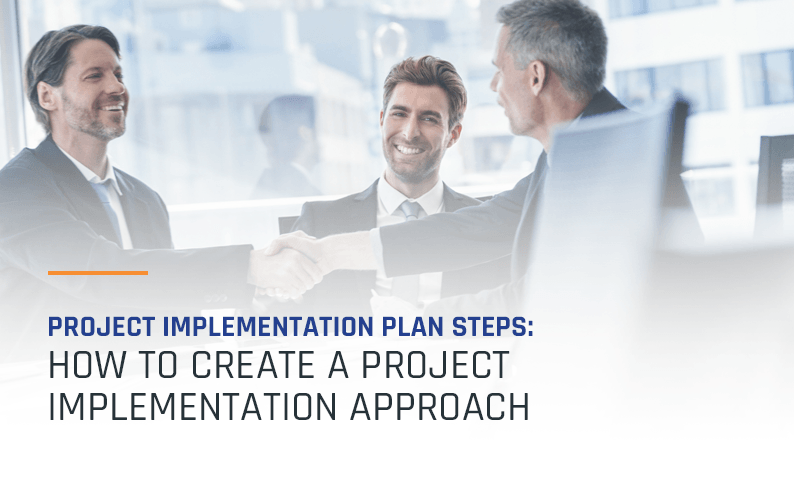
Project Implementation Plan Steps: How to Create a Project Implementation Approach
Regardless of which style of project implementation your organization chooses, every project implementation plan should account for the following steps across all initiatives:
1. Profile the Project’s Impact
A project impact profile identifies the ideal outcomes, or value-adding benefits, a project will bring. Organizations create profiles at the onset of the project, illustrating what competitive advantages this exact initiative will bring.
Generally speaking, there are two main types of project profiles you can create to outline ideal project outcomes.
- Strategic improvement: Strategic improvements are those carrying higher-level outcomes impacting the whole organization. Their criteria will likely court higher budgets and higher resource allocation across more complex timelines, with multiple teams managing risk mitigation under the guidance of the PMO.
- Process improvement: Process improvements are those executed on a team or intra-department level, typically over a shorter term, with smaller budgets and using fewer internal resources approved by the PMO.
2. Identify Ideal Resources Required to Realize Impact Outcomes
Identifying required resources is typically part of phase one and phase two project criteria mapping. However, organizations that don’t use a phased approach to project implementation still must create a formal, repeatable template for teams and departments to outline project resource needs.
What are these ideal resources necessary to see a project’s outcomes to fruition? Every project plan must account for tools like:
- Software
- Hardware
- Training
- External consultants
- Additional office supplies
- Test labs
- Miscellaneous tools and tracking systems
3. Consult Stakeholders
In the phased project implementation approach, the project stakeholder pool widens gradually. What begins with a few departments and their test projects spreads to incorporate all teams, leaders and departments, with an established PMO overseeing onboarding.
In a PM methodological approach, the chosen PM strategy will outline which stakeholders to bring on, and when. The standard PM method will also define the communication channels and practices between these stakeholders.
Stakeholders involved in a project should have their roles and responsibilities assigned as early as possible. Those roles can be prorated across a change timeline with key milestone dates, keeping stakeholders on track and in the loop.
4. Establish Communication Requirements
Communication requirements help maintain transparency and progress across a project’s workflows. While internal communication preferences and habits will be unique to a team, plans for project implementation help structure formal project touchpoints, maintaining unsiloed and swift workflows. Specifically, project planning should establish:
- What communications software project members will use to chat and reach out to one another
- What workflow-management software teams will use to track project components and signal when the next team member can begin their work
- When group meetings will take place
- When individual project touchpoints between parties and team leaders will occur
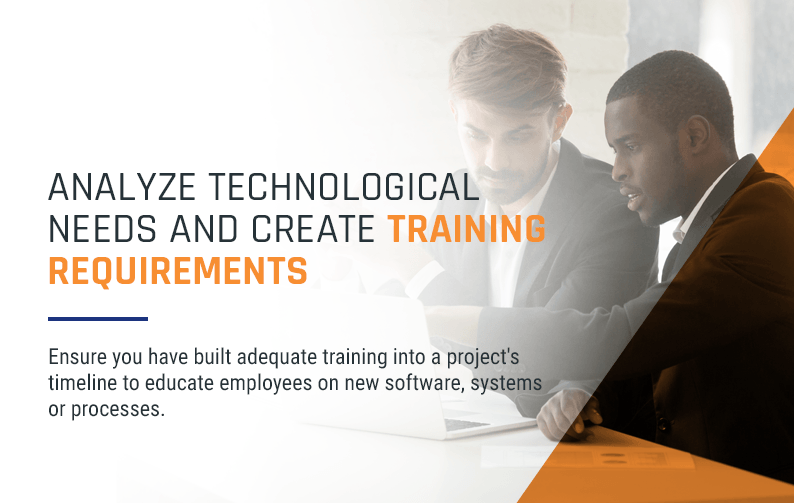
5. Analyze Technological Needs and Create Training Requirements
Ensure you have built adequate training into a project’s timeline to educate employees on new software, systems or processes. Training requirements ensure everyone involved understands new project implementation tools and technologies before they need to use them, increasing employee buy-in and adoption rates.
6. Map a Change Timeline
Consider including change timelines in addition to a project’s overall implementation schedule. Change timelines infuse a little flexibility and fluidity into a project’s overview, meaning one conflict or interruption doesn’t unravel the entire initiative.
To help map a flexible, yet strategic, change timeline, classify all project activities into “set” or “variable” tasks. Set tasks are those that cannot change. They are imperative to the realization of the project as planned, whereas team members can tweak and tailor variable assignments along the project’s timeline and still see the desired outcomes.
7. Draft Performance Metrics and an Implementation Approach Dashboard
Performance metrics will measure the progress of project implementation, as well as project controls. An implementation approach dashboard is how and where to display those metrics to project stakeholders. Together, these two domains allow an organization to measure and manage each phase of project implementation, using real data to tweak a better approach tomorrow.
8. Finalize and Roll out the Schedule
Share the final project’s stages and deadlines with all project participants and leaders. Leave time to make final schedule alterations based on stakeholder feedback. In some cases, a pre-established PMO will manage the final rollout, whereas in others, an individual team shares the deployment with a still-developing PMO.
Tips on How to Implement a Project Successfully
Project implementation approaches improve their success rates when organizations adopt the following habits:
- Don’t rush project implementation planning stages: Planning an organization’s new project implementation strategy can take months, even years — and that’s OK! Early planning and criteria-mapping build the backbone of the entire new methodology. Slow but steady planning creates your exact roadmap to budgeting, scheduling, communicating, collaborating and completing a project, plus what software, hardware or tools to use to do so. It helps encourange employee buy-in and reduces transition pain points, too.
- Track budgets and timelines: PMOs can help track not only a project’s outcome-based KPIs, but also monitor the resources it took to get there. How many projects stayed within budget or duration estimates? Did team members complete tasks according to the projected timeline? Where do changes or interruptions most often strike? Understanding these metrics helps an organization’s PMO maintain more preemptive project implementation criteria.
- Create continuous feedback loops: Employees and project participants should have numerous points to relay their perspectives, including after a project’s formal completion. In particular, organizations should hear feedback on tools and technological affordances, and how communication practices helped or hindered team members’ abilities to execute their assigned tasks.
- Don’t neglect mentorship and training: Mentorship and training sessions are the key way to establish long-term employee buy-in for the new project implementation methodology. Employees need time and support, particularly after introducing new software or hardware. The inability to adopt technology is one of the main culprits behind lagging or failed project implementation plans, and is something remedied only through ongoing support.
- Hire an implementation consultant or firm: Project implementation firms can assist organizations in identifying, creating and evaluating their formal, enterprise-wide project approach. Their expertise allows businesses to define the building blocks it takes to see a project from ideation to implementation, then map where current gaps exist preventing them from doing so. Implementation support consultants work with organizations to conduct customized employee training, technology integration, data mapping and metric conversion as well as PMO development, to name a few.
Project Implementation and Implementation Support Tailored to You
For more information on project implementation approaches and strategies for the private and public sectors, subscribe to Momentum, Inc.’s blog.
Then, reach out to learn more about our industry leading Project Management and Implementation Support Service packages to elevate the projects your organization already supports. With our partnership, you can morph your project management and project implementation process to be more strategic, more intuitive and more effective than ever.
 Tap to email
Tap to email


